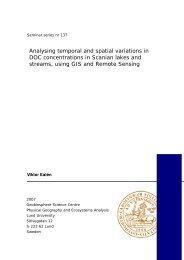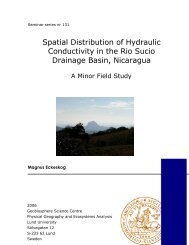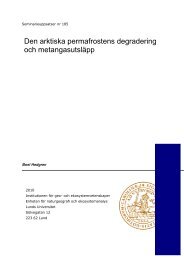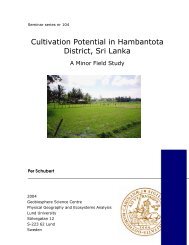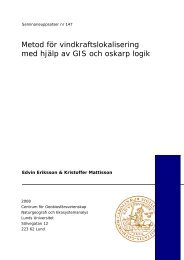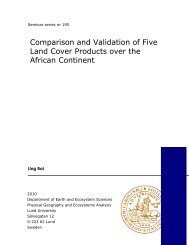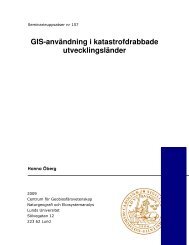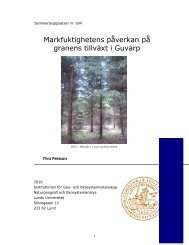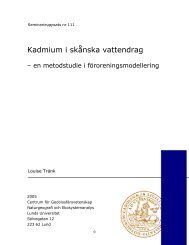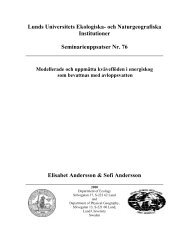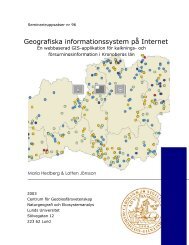Finding Potential Sites for Small-Scale Hydro Power in Uganda: a ...
Finding Potential Sites for Small-Scale Hydro Power in Uganda: a ...
Finding Potential Sites for Small-Scale Hydro Power in Uganda: a ...
You also want an ePaper? Increase the reach of your titles
YUMPU automatically turns print PDFs into web optimized ePapers that Google loves.
ivers are seasonal, s<strong>in</strong>ce the hydro power station will then not work dur<strong>in</strong>g the wholeyear. The permanent rivers were then rasterized us<strong>in</strong>g the function LINEGRID <strong>in</strong>ArcWorkstaion. We classified all river cells to conta<strong>in</strong> the value of one and all non-rivercells a value of zero. The classified raster layer was then multiplied by the DEM to applythe height values of the DEM to the river cells by us<strong>in</strong>g Raster Caculator <strong>in</strong> ArcGIS -Spatial Analyst (see Figure 4.5).Permanent Rivers DEM Rivers with elevationFigure 4.5 Raster Calculation of Permanent Rivers and the DEM <strong>in</strong> order to receivea layer with Permanent Rivers with height values. Grey cells represent river cellsand the values <strong>in</strong> the DEM represents height values <strong>in</strong> meters.4 .2.5 AlgorithmTo f<strong>in</strong>d the sites suitable <strong>for</strong> build<strong>in</strong>g small-scale hydropower stations we designed analgorithm <strong>in</strong> the software Matlab 7.0, see Appendix 9.4. It is designed to search amaximum of ten connected river cells (if a cell size of 10 meters is used), whichPenstockapproximately equals 100 meters, to see if≤100 metersthe criterion of 20 meter accumulatedHead20 metershead is fulfilled. These cells will then besaved <strong>in</strong>to an output raster. Accord<strong>in</strong>g toMaher and Smith (2001) a head of 20 Figure 4.6 Head and penstock.meters is recommended to produceenough power <strong>for</strong> the k<strong>in</strong>d of small-scale hydropower stations that our study focus on.The distance of 100 meters corresponds to the length of the penstock <strong>in</strong> which the waterflows down to the turb<strong>in</strong>e. There is no absolute measure of how long the penstock mustbe, s<strong>in</strong>ce it can vary greatly depend<strong>in</strong>g on the appearance of the terra<strong>in</strong>. However, thepenstock is one of the most expensive parts <strong>in</strong> the construction of small-scalehydropower stations, which imply that a short penstock is preferable. Maher and Smith(2001) recommend a penstock of 100 meters, which together with a 20-meter head areset to be the criteria <strong>in</strong> our algorithm (see Figure 4.6).40



